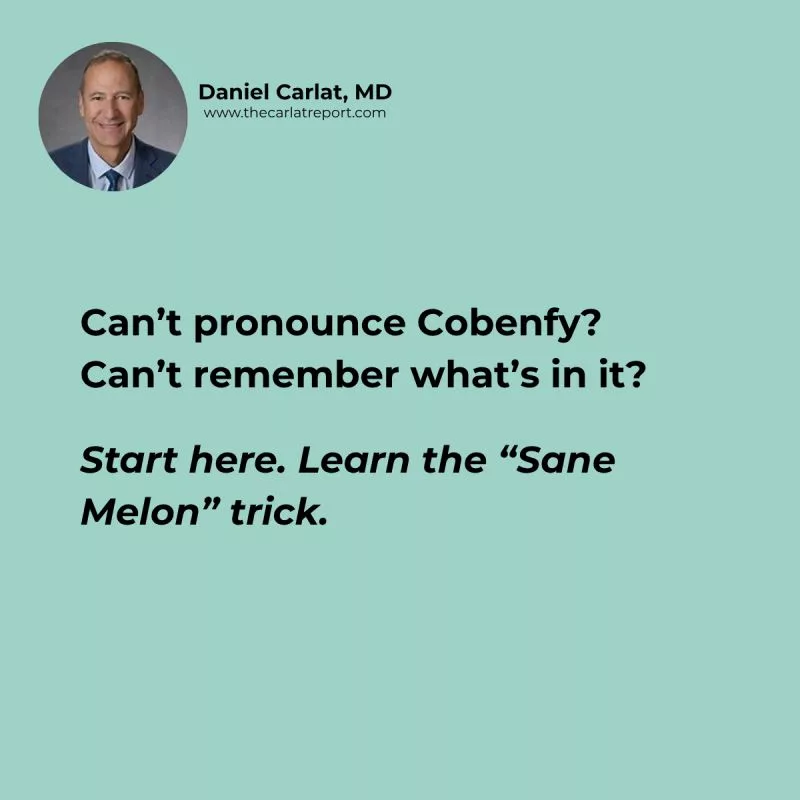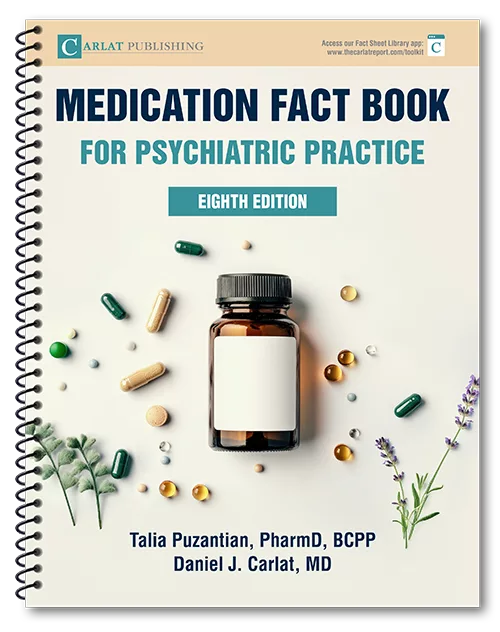Has gained weight.
Feels stiff.
No motivation.
And still psychotic.
You’re thinking it’s time to try Cobenfy.
The Problem
But here’s the problem:
You don’t know how to pronounce it.
You can’t remember what’s in it.
And you’re fuzzy on how it actually works.
Let’s Fix That
It’s Co-BEN-fee (not Co-ben-FI).
Think “combo + fee”—because it’s a combo of two meds, and the fee is steep: about $1800/month.
What’s in It?
Xanomeline and Trospium. Two names no one remembers.
Xanomeline = “Sane Melon.”
That’s the antipsychotic piece. It activates M1 and M4 muscarinic receptors in the brain—like flipping the switch on acetylcholine. More acetylcholine = more clarity. Less psychosis.
Trospium = “Trust Him.”
That’s the bodyguard. It blocks the peripheral cholinergic side effects—nausea, diarrhea, sweating—without crossing into the brain.
You can trust him to protect the body while the brain does the work.
Acetylcholine for Psychosis?
And if “acetylcholine” as a treatment for psychosis sounds wild?
Just remember:
➤ Anticholinergics cause confusion. So pro-cholinergics? They restore clarity.
➤ Dementia meds like Aricept work by boosting acetylcholine. This isn’t new territory—it’s just a new path in schizophrenia.
For Now
For now, this post is for you—so you can walk into clinic knowing how to say it, what it’s made of, and how it works.
What’s Next
How to explain it to patients?
We’ll tackle that in a future post.
Follow me (Daniel Carlat on LinkedIn) for practical, no-hype updates in psychiatry and digital tools that support real-world care.


_-The-Breakthrough-Antipsychotic-That-Could-Change-Everything.webp?t=1729528747)



